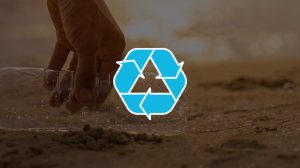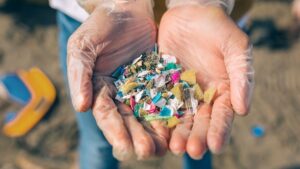Plastic waste has doubled in 20 years: OECD report
The world is producing twice as much plastic waste as two decades ago, with the bulk of it ending up in landfill, incinerated or leaking into the environment, and only nine percent successfully recycled, according to a new OECD report.
Ahead of UN talks on international action to reduce plastic waste, the OECD’s first Global Plastics Outlook shows that as rising populations and incomes drive a relentless increase in the amount of plastic being used and thrown away, policies to curb its leakage into the environment are falling short.
Plastic consumption has quadrupled over the past 30 years, driven by growth in emerging markets. Global plastics production doubled from 2000 to 2019 to reach 460 million tonnes. Plastics account for 3.4% of global greenhouse gas emissions.
Almost half of all plastic waste is generated in OECD countries, according to the Outlook. Plastic waste generated annually per person varies from 221 kg in the United States and 114 kg in European OECD countries to 69 kg, on average, for Japan and Korea.
Waste doubled
Global plastic waste generation more than doubled from 2000 to 2019 to 353 million tonnes. Nearly two-thirds of plastic waste comes from plastics with lifetimes of under five years, with 40% coming from packaging, 12% from consumer goods and 11% from clothing and textiles.
Most plastic pollution comes from inadequate collection and disposal of larger plastic debris known as macroplastics, but leakage of microplastics (synthetic polymers smaller than 5 mm in diameter) from things like industrial plastic pellets, synthetic textiles, road markings and tire wear are also a serious concern.
OECD countries are behind 14% of overall plastic leakage. Within that, OECD countries account for 11% of macroplastics leakage and 35% of microplastics leakage. The Outlook notes that international co-operation on reducing plastic pollution should include supporting lower-income countries in developing better waste management infrastructure to reduce their plastic leakage.
The pandemic’s role
The report finds that the COVID-19 crisis led to a 2.2% decrease in plastics use in 2020 as economic activity slowed, but a rise in littering, food takeaway packaging and plastic medical equipment such as masks has driven up littering. As economic activity resumed in 2021, plastics consumption has also rebounded.
Only 9% of plastic waste is recycled (15% is collected for recycling but 40% of that is disposed of as residues). Another 19% is incinerated, 50% ends up in landfill and 22% evades waste management systems and goes into uncontrolled dumpsites, is burned in open pits or ends up in terrestrial or aquatic environments, especially in poorer countries.
Reducing pollution from plastics will require action, and international co-operation, to reduce plastic production, including through innovation, better product design and developing environmentally friendly alternatives, as well as efforts to improve waste management and increase recycling.
Bans and taxes on single-use plastics exist in more than 120 countries but are not doing enough to reduce overall pollution. Most regulations are limited to items like plastic bags, which make up a tiny share of plastic waste, and are more effective at reducing littering than curbing plastics consumption.



